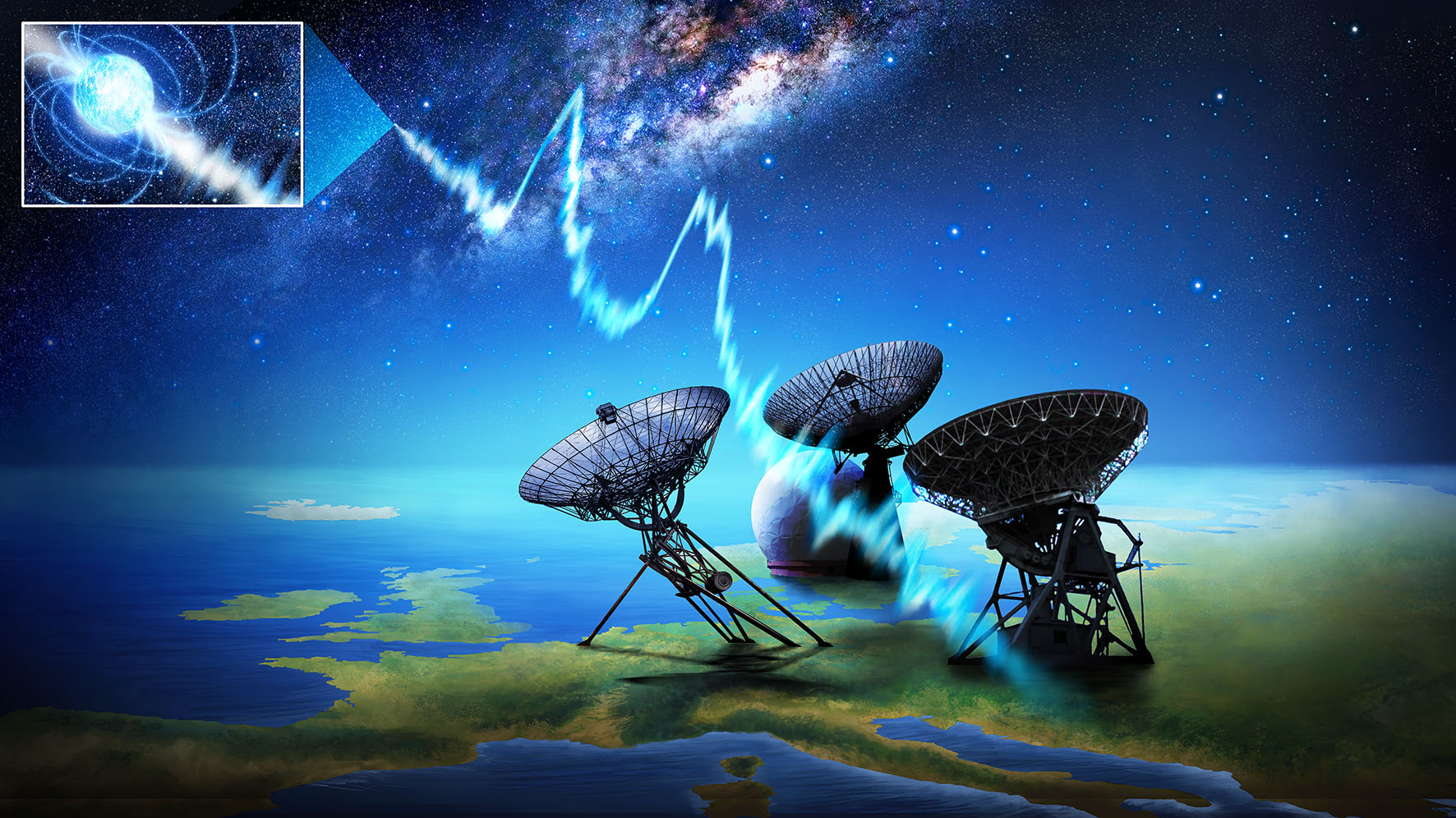Daily Image
20-11-2020A fast radio burst source in our own Milky Way?
| Submitter: | Jason Hessels |
| Description: | Thousands of fast radio bursts (FRBs) have now been detected from distant galaxies, but how are they created? Finding such a source in our own Milky Way galaxy would certainly help solve the puzzle, because we could then get a much closer view. On April 28th, 2020, the CHIME/FRB and STARE2 teams detected a Mega-Jansky-millisecond burst from SGR 1935+2154, a magnetar in our own galaxy. Magnetars are neutron stars that are powered primarily by the release of stored magnetic energy. The discovery of this exceptionally bright burst - which for a brief instant was about as bright as the Sun in radio waves - may provide an important clue to the nature of the enigmatic FRBs. If placed at an extragalactic distance, this SGR 1935+2154 radio burst would be within a factor of about 10-100 as bright as the weakest FRBs seen to date. This comparable brightness suggests that at least some fraction of FRBs come from magnetars. Using a set of 4 European dishes in the Netherlands, Sweden and Poland, we endeavoured to detect more bursts from this source. In a campaign spanning hundreds of hours of observations, we detected 2 more! These subsequent bursts were about 10 thousand times less bright compared to the one caught by CHIME/FRB and STARE2. Are they from the same phenomenon occurring at the magnetar? Or can this source produce multiple types of radio bursts? The results were published on November 16th, 2020 in Nature Astronomy: "Detection of two bright radio bursts from magnetar SGR 1935+2154" (Kirsten et al. 2020). University of Amsterdam and ASTRON Masters and PhD students Mark Snelders, Matt Jenkins, Kenzie Nimmo and Jakob van den Eijnden were critical in making the project and analysis possible. |
| Copyright: | Image credit: Danielle Futselaar |
| Tweet |  |
